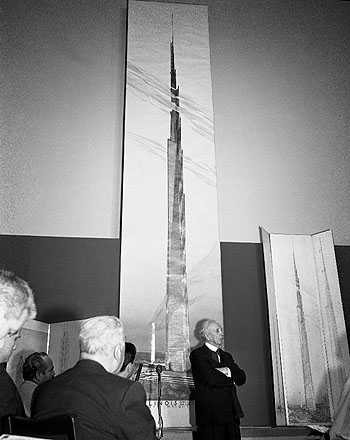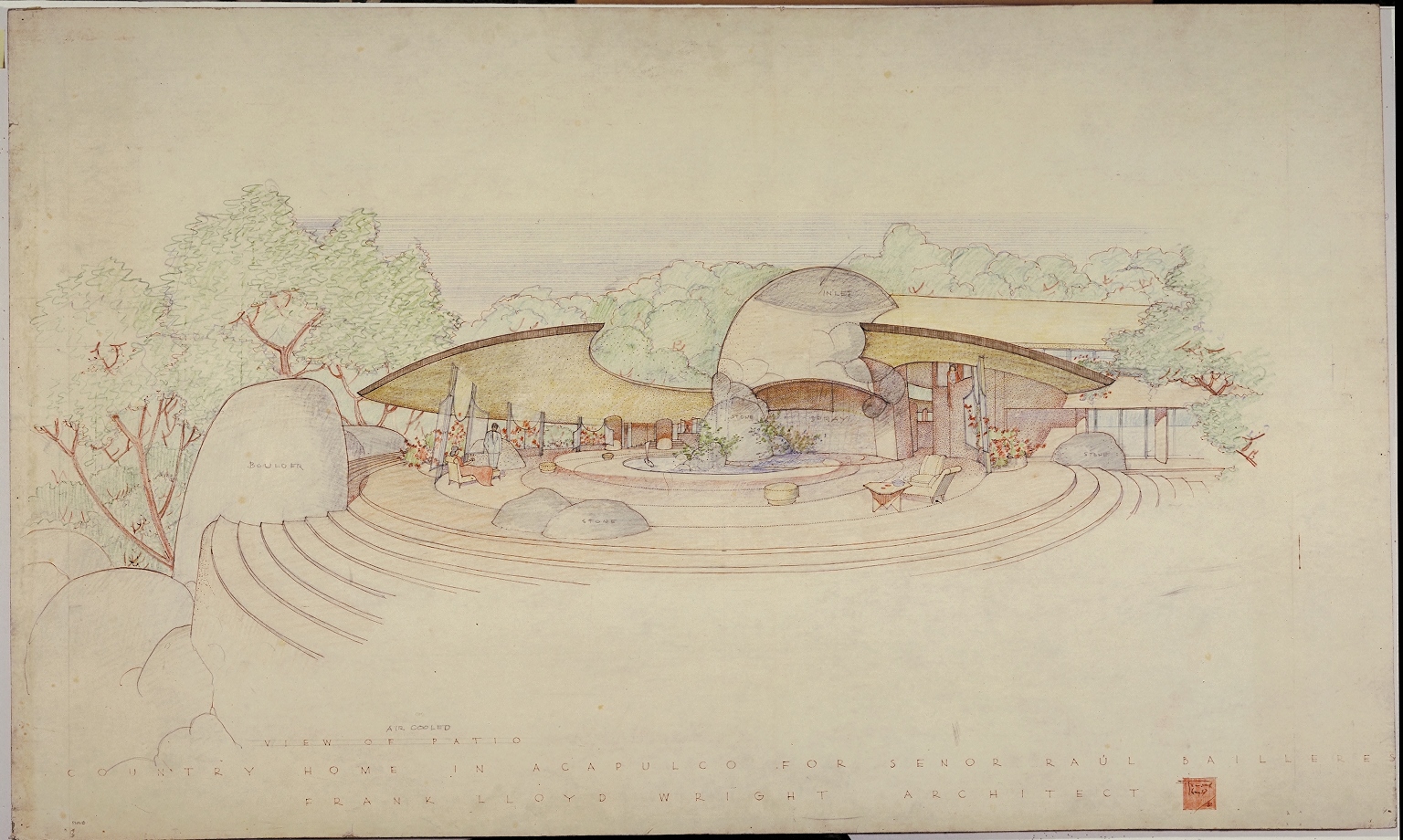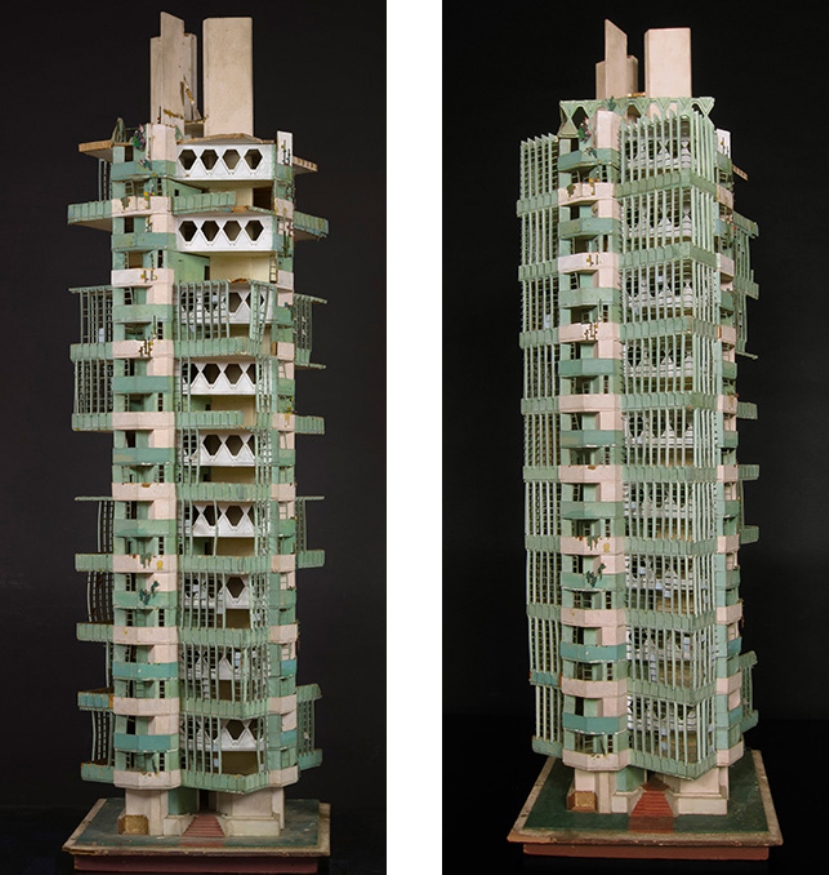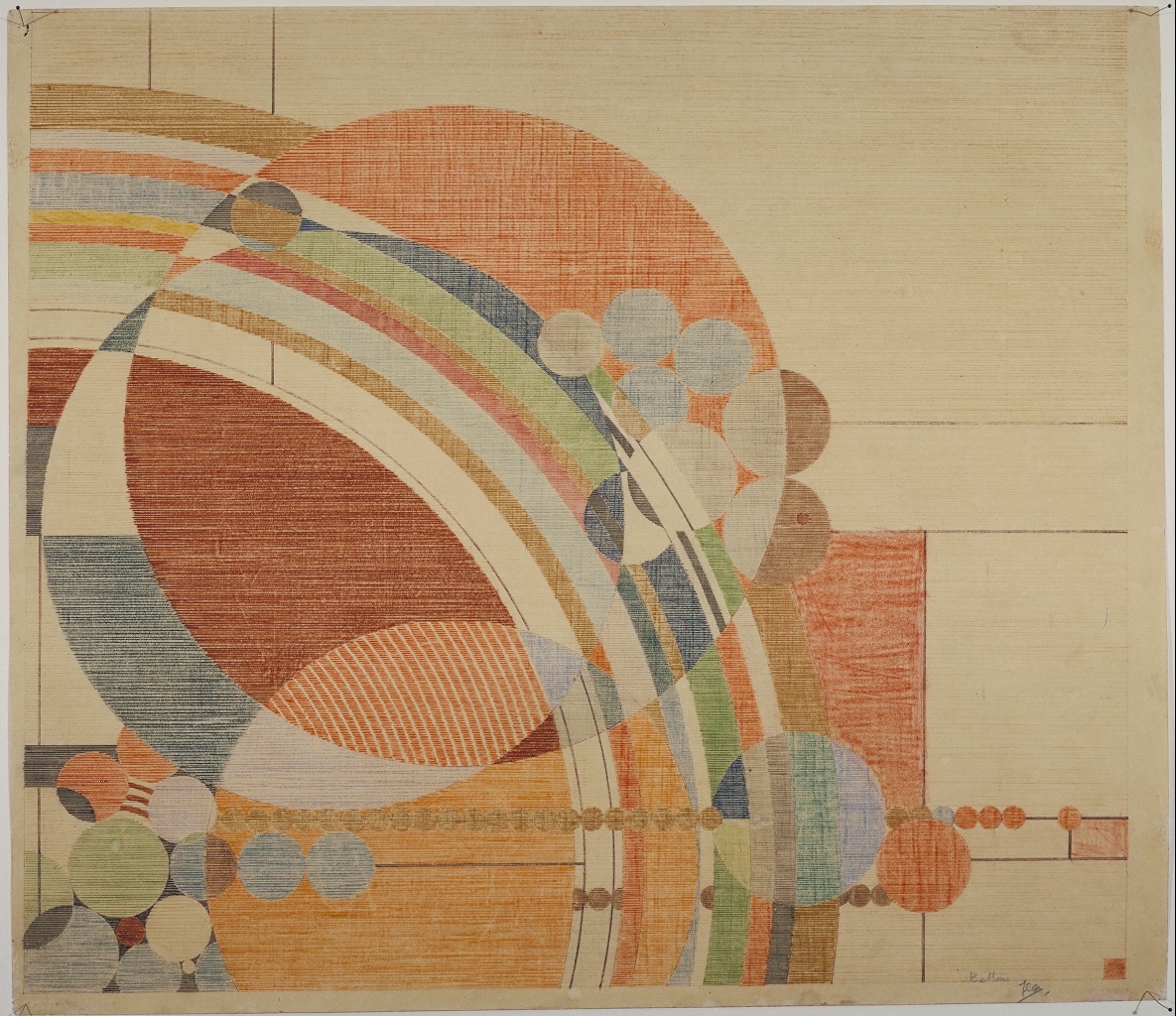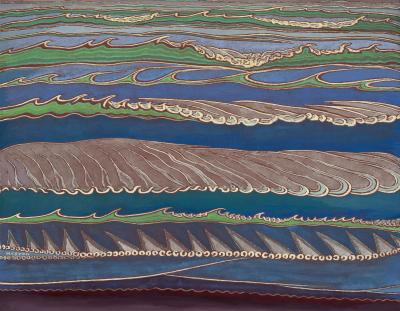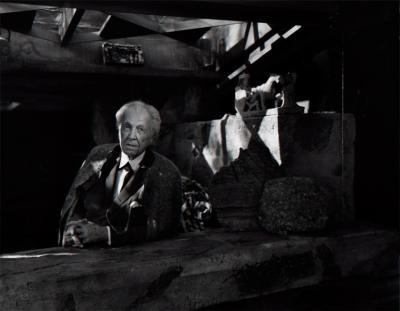A Sneak Peek at MoMA’s Upcoming Frank Lloyd Wright Retrospective
Mark your calendars! On June 12, 2017, the Museum of Modern Art (MoMA) will unveil a long-awaited retrospective dedicated to the one-and-only Frank Lloyd Wright. Widely considered the father of modern American architecture, Wright left an indelible mark on contemporary culture. Not only did he change the face of modern living forever (you have him to thank for open floor plans, carports, and the use of native building materials), his work continues to inspire new generations of designers and design lovers alike.
Frank Lloyd Wright at 150: Unpacking the Archive will coincide with the 150th anniversary of the architect’s birth. Structured as an anthology consisting of twelve chronological sections, the retrospective will focus on key objects from the Frank Lloyd Wright Archive, including architectural drawings, models, building fragments, films, television broadcasts, print media, furniture, tableware, textiles, paintings, photographs, and scrapbooks. Together, these objects will tell the story of one of history’s most influential figures, touching on a range of pivotal themes, projects, and events in Wright’s career.
There will be around 450 works from the archive—which is cared for by MoMA and the Avery Architectural & Fine Arts Library at Columbia University—on view. Spanning the period between the 1890s, when Wright’s career began to take shape, and his death in 1959, the exhibition explores a number of celebrated projects, including Fallingwater—a cantilevered stone home from the 1930s that is arguably Wright’s most revered residence—and the Robie House. Built in 1910, the Robie House stands as both the consummate expression of Wright’s Prairie style and an icon of modern architecture. Defined by its horizontality, brilliantly simple open floor plan, masterful use of materials and seamless integration of indoor and outdoor spaces, the home is widely regarded as Wright’s most innovative and forward-thinking Prairie house.
Visitors to the exhibition can also catch a glimpse of the recently restored model of St. Mark’s Tower—a spectacular but unrealized apartment building designed by Wright in the 1920s. The structure was conceived as part of a suite of three residential towers planned for New York’s East Village. Had it come to fruition, St. Mark’s Tower would have been Wright’s first skyscraper in Manhattan. Ultimately, the design served as a springboard for the Price Tower in Bartlesville, Oklahoma—Wright’s tallest structure and one of only two vertical buildings designed by the architect (the other is the S.C. Johnson Wax Research Tower in Racine, Wisconsin).
In addition to specific projects, Unpacking the Archive will explore Wright’s fascination with ornament; his understanding of the relationships between nature, landscape, and architecture; and his fascination with circular geometries (hello, Solomon R. Guggenheim Museum). A section will be dedicated to the archive itself and its vital role in helping to preserve Frank Lloyd Wright’s monumental legacy.
Click here for more information about Frank Lloyd Wright at 150: Unpacking the Archive.















